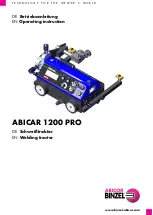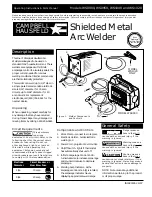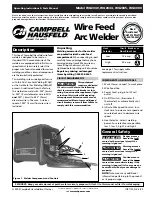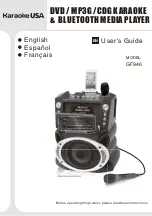
2
3
RISK OF ELECTRIC SHOCK
DO NOT OPEN
CAUTION: TO REDUCE THE RISK OF ELECTRIC SHOCK
DO NOT REMOVE COVER (OR BACK) NO
USER-SERVICEABLE PARTS INSIDE REFER SERVICING
TO QUALIFIED PERSONNEL
CAUTIONS FOR INSTALLATION
When installing the speaker on a wall or ceiling, it
should be secured firmly using rigid anchor bolts to
prevent it from coming off. Also, care should be taken
with regard to the resonance of the mounting
brackets caused by speaker operations.
If the speaker is operated at high output levels, the
floor, wall or ceiling may vibrate, which will impair the
sound quality. Special care should be taken to
prevent resonance and vibrations caused by the
mounting angles.
Always be sure that the surface chosen for
mounting is structurally capable of supporting the
weight of the speaker. Do not mount more than one
speaker into one Ceiling Mounting Bracket (optional).
Also, avoid having sound absorbing material such as
curtains, etc. on the wall or placing the speakers too
close to the window.
INSTALLATION EXAMPLE
1. KTV/Large Hall Installation
When using several speakers at the same
time, special care must be taken to ensure that the
output level of the speakers would match each other
in order to avoid feedback which may burn the
tweeter with high frequency.
2. Mounting the Speaker to the Ceiling
Place the ceiling mount bracket (Model: SPS-706) on
the top of the speaker cabinet and put two screws to
fasten it. Then, put one screw to hold the speaker
firmly to the ceiling. Adjust the speaker up/ down and
left/right for rotation at different angles to achieve the
maximum sound effect. Please refer to the above
diagram for instruction.
The structure of the ceiling must be strong
enough to hold at least 50 pounds. The ceiling mount
bracket in the diagram is Model: SPS-706 and it is
optional.
3. Mounting the Speaker to the Wall
Place the wall mount panel on the top of the speaker
cabinet and put two screws to fasten it. Then, put
four screws to hold the speaker firmly into the wall.
Adjust the speaker up/ down and left/right for rotation
at different angles to achieve the maximum sound
effect. Please refer to the above diagram for
instruction.
PLACING THE SPEAKERS
The speakers can be mounted on to the optional
portable stand, (see figure below). Make sure that the
mounting system (hardware, stand, etc.) is capable of
supporting four times the weight (approximately 25
lbs per speaker) of the speakers.
Please do not stack two-pieces of speakers
onto the adjustable speaker stand.
Circuit Diagram
CONNECTION OF SPEAKER
CABLES
There are two types of speaker input terminals which
should be selected according to application. (see
figures)
1. Use of banana type terminals:
Insert the banana-type terminal cable from the
amplifier into the speaker terminal hole. The plus "
+
"
side is marked red and minus "
-
" side is marked
black.
2. Use of insert-type terminals:
Depress the insert-type terminal cable from the
amplifier into the speaker terminal hole. The plus "
+
"
side is marked red and minus "
-
" side is marked
black.
Before connecting the speaker to connection, you
must make sure that the master volume and the AC
power are off. Otherwise, it may burn your speaker.
Then, double check the connection to match the "
+
"
and "
-
" correctly.
NO WARRANTY AFTER OPENING
No opening on speaker frame
or repairing the components
inside the speaker. We always
recommend you to hire
professional to do the speaker
connection and repair.
Left Speaker
(Stand not included)
Right Speaker
(Stand not included)
1.
Banana Plug Type
2.
Insert Type
USA
AFC 2007-0305 US Right
SATIS
FACTATIO
N
CO
NSUMER
Engineered by
Better Music Builder
Expert Design Plus Dynamics 2007
Angle
Location of Microphone
Angle Adjustment
Subwoofer
Driver
Left Speaker
Amplifier
Right
Antena
Left
Antena
Volume
Left Speaker
NOTE
NOTE
NOTE
NOTE






















